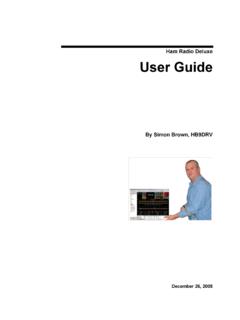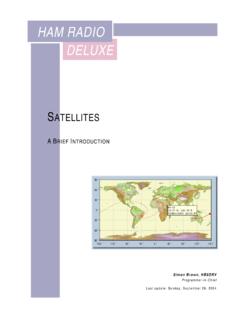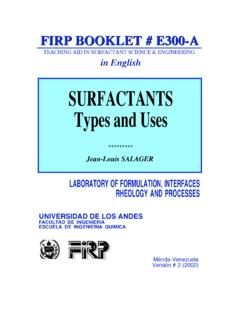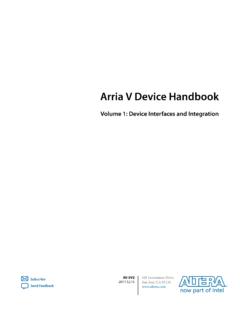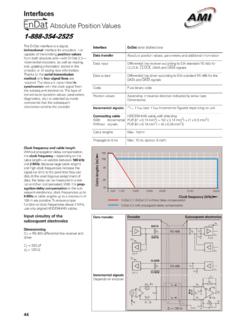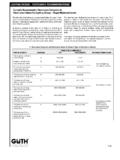Transcription of HAM RADIO DELUXE
1 HAM RADIO . DELUXE . I NTERFACING. A BASIC GUIDE TO CAT AND A UDIO INTERFACING. Peter Halpin, PH1PH. Support, Ideas and Testing Basil Helman, G4 TIC. Construction Project Simon Brown, HB9 DRV. Programmer-in-Chief Last update: Tuesday, November 20, 2007. User Guide The IC-703s used in this project were supplied by Martin Lynch and Sons of London. Special thanks are due to Chris Taylor for his friendly and efficient service. 2. TABLE OF CONTENTS. INTRODUCTION .. 5. READ THIS NOW BEFORE GOING ANY FURTHER! .. 7. CAT interface PROBLEMS .. 7. AUDIO interface 7.
2 ONBOARD SOUNDCARDS .. 8. USB TO SERIAL CONVERTERS .. 9. 9. ELECRAFT CAT INTERFACING .. 11. ICOM CAT INTERFACING .. 13. KENWOOD CAT INTERFACING .. 17. YAESU CAT INTERFACING .. 19. AUDIO INTERFACING .. 21. COMMERCIAL SOLUTIONS .. 23. CAT 23. AUDIO interface .. 23. TWO EASY-TO-BUILD CAT INTERFACES .. 25. INTRODUCTION .. 25. 25. MATRIX BOARD .. 25. CONSTRUCTION .. 26. BOXING THE COMPLETED PROJECT: .. 30. INTRODUCTION. In order to use Ham RADIO DELUXE to control your rig you will require a CAT interface . Some radios supported by Ham RADIO DELUXE already have built-in RS232 interfaces (the FT-847 is an example).
3 Please check your RADIO 's handbook for more information. Examples of CAT interfaces are Icom's CT-17 and Yaesu's FIF-232 and CT-62. To use PSK31 DELUXE or other digital mode software you will need an audio interface . You can either make your own or purchase a solution. Examples of audio interfaces are the Tigertronics SignaLink and West Mountain RADIO 's NoMic. As far as I aware, the only commercial interfaces offering both CAT. and audio interfacing are West Mountain RADIO 's RigBlaster Pro and G3 VFP's CatOpto models. I am deeply grateful to the designers of the various interfaces mentioned here: without their practical expertise this document would not have been possible.
4 Please note that the Ham RADIO DELUXE Development Team have not personally tested all circuits shown here: we can accept no liability whatsoever for damage resulting from the use of any of these designs. READ THIS NOW BEFORE GOING ANY FURTHER! There are many problems that a newcomer can come across while trying to set up both CAT and Audio interfaces: I'll try to help you avoid the most common problems. CAT interface PROBLEMS. 1. Ham RADIO DELUXE displays the error Access Denied. Some previously accessed software will cause problems for the operating system by holding a comport open, thus denying your CAT interface access.
5 Only one program can open a comport at a same time. PDA / GSM software is one example. The simplest way to deal with this is a reboot: the offending program will no longer have control over the port. 2. Some notebook serial ports can't supply enough current and/or voltage to operate homemade interface cables that rely on the serial port for power. You will have to either make up an interface to a different design, or use external power. 3. Ground loops can be a problem. Fully isolated interfaces are probably the only real option here. Taking all precautions to avoid ground loops should be a matter of course.
6 A UDIO I NTERFACE PROBLEMS. 1. Probably the most common causes of problems are overdriving the rig, and ground loops. Avoiding ground loops is generally not too difficult if you use isolated input and outputs. See the circuit of the homebrew interface in the AUDIO INTERFACING chapter to see how it can be done. Under no circumstances should you use un-isolated connections: they lead to ground loops, and will in all probability introduce hum and other unwanted artifacts on your signal. One disadvantage of using a waterfall display is that you can see the other guy's filthy signal but not your own.
7 I know that some people get away with it but the risk just isn't worth it. 2. Overdriving the rig will lead to splatter and deformed signals. Good operators do not splatter! There's a very useful little gadget called the PSKM eter that can be obtained from . This makes it impossible to overdrive your rig, yet obtain maximum clean output at all times. I use one myself it's ideal. The only drawback is that it requires a serial port: this can be a problem with notebooks and the like but see the next chapter for more info. User Guide Figure 1: PSKmeter If you are not using a PSKM eter then the best way to set up your rig for an acceptable TX signal is as follows: 1.
8 Connect a dummy load to your rig, with a power meter in the line. If you don't have a power meter, use the rig's own built-in meter. 2. Start PSK31 DELUXE and select a TX window. DO NOT ENTER. ANY TEXT. Click on the TX button and adjust your soundcard's audio output to give no more than 25% of your rig's rated output. DO NOT EXCEED THIS LEVEL! 3. Start typing text and check that the output is no more than 50% of the rig's rated output. 4. Check your ALC meter to ensure that there is NO ALC action whatsoever. If the ALC has to engage, you are overdriving your rig and splattering all over the band.
9 Wide signals are unnecessary and antisocial. 5. Remember that PSK31 is THE ultimate QRP digital mode (at the moment). You don't need to operate at high power levels the lower the drive, the cleaner your signal will be. O NBOARD S OUNDCARDS. And one last tip: the onboard soundcards supplied with many computers are very basic indeed. Many people report seeing ghost signals on their waterfalls: these are very often caused by below-par soundcards. If you can install a good one I use a Creative Audigy2 you will be pleasantly surprised at how clean' the waterfall looks.
10 An added bonus is that you'll be able to decode weaker signals too! Adding a second soundcard to any system can be recommended: but please make sure that you get a good one. 8. USB TO SERIAL CONVERTERS. Many if not all - modern notebook computers do not come supplied with RS232 serial ports but with USB ports. In order to use a CAT interface with one of these you will require a USB<>Serial port adapter/converter. Some users have reported problems when using these converters: in one case it was necessary to purchase a different model, while with others a simple driver update was all that was required.
